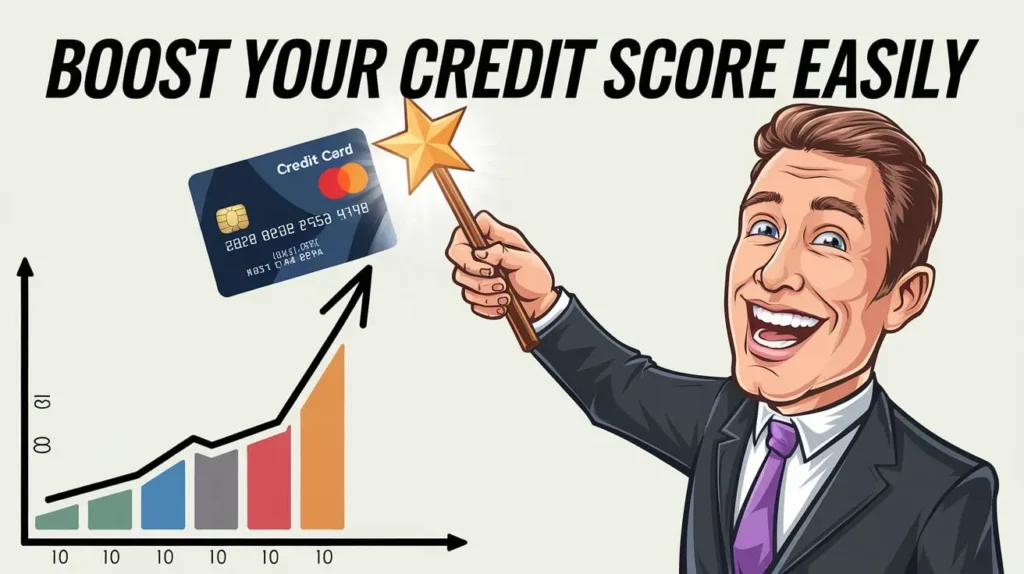Managing debt is a significant challenge for many individuals. Still, with the right debt reduction strategies, you can take control of your financial situation and work towards a debt-free future.
In this article, we’ll explore some of the most effective debt reduction strategies to help you tackle your outstanding balances and regain financial freedom.
Implementing proven debt reduction strategies is key to minimizing the interest you pay and accelerating your journey out of debt.
Whether you’re dealing with student loans, credit card debt, or other financial obligations, these debt reduction strategies will provide you with a clear roadmap to manage and eliminate your debt successfully.
Debt Reduction Strategies
In today’s complex financial landscape, managing debt has become a critical skill for individuals and families. With the right debt reduction strategies, you can regain control of your finances and pave the way to a more secure future.
This comprehensive guide explores effective debt-management methods, offering insights and practical tips to help you achieve financial freedom.
Understanding Your Debt
Before diving into specific strategies, it’s crucial to have a clear picture of your financial situation.
Types of Debt
- Credit Card Debt: Often carrying high interest rates, this is typically unsecured.
- Personal Loans: These can be secured or unsecured and often have fixed interest rates.
- Student Loans: A common debt for many young adults, often with favourable terms.
- Mortgage: Typically the most significant debt for homeowners, secured by the property.
- Auto Loans: Secured loans used to finance vehicle purchases.
- Medical Debt: Resulting from healthcare expenses, often unexpected.
Assessing Your Debt
Start by listing all your debts, including:
- Creditor names
- Outstanding balances
- Interest rates
- Minimum monthly payments
This overview will help you prioritize and create a targeted debt reduction plan.
Mastering Your Finances: Debt Reduction Strategies
Now, let’s explore various strategies to reduce your debt effectively.
1. The Debt Avalanche Method
The debt avalanche method focuses on paying off debts with the highest interest rates first.
How it works:
- List your debts from highest to lowest interest rate.
- Make minimum payments on all debts.
- Put any extra money towards the debt with the highest interest rate.
- Once the highest-interest debt is paid off, move to the next highest.
Pros:
- Saves the most money in interest over time
- This can lead to a faster overall debt payoff
Cons:
- It may take longer to see visible progress if high-interest debts have large balances
2. The Debt Snowball Method
This method, popularized by financial expert Dave Ramsey, focuses on paying off the smallest debts first.
How it works:
- List your debts from smallest to most significant balance.
- Make minimum payments on all debts.
- Put any extra money towards the smallest debt.
- Once the smallest debt is paid off, move to the next smallest.
Pros:
- Provides quick wins, boosting motivation
- Simplifies finances by eliminating individual debts faster
Cons:
- May pay more in interest over time compared to the avalanche method
3. Debt Consolidation
Debt consolidation involves combining multiple debts into a single loan or credit card balance.
Methods:
- Personal loans for debt consolidation
- Balance transfer credit cards
- Home equity loans or lines of credit (for homeowners)
Pros:
- Simplifies payments (one payment instead of multiple)
- Can lower overall interest rate
- May reduce the monthly payment
Cons:
- May extend the repayment period
- Requires good credit for best terms
- Potential fees for balance transfers or loan origination
Learn more about personal loans and when they’re a good idea
4. Negotiate with Creditors
Don’t underestimate the power of communication with your creditors.
Steps:
- Contact your creditors directly
- Explain your financial situation honestly
- Ask about hardship programs or lower interest rates
- Request waived fees or adjusted payment terms
Pros:
- This can result in lower interest rates or waived fees
- This may lead to more manageable payment terms
Cons:
- Success not guaranteed
- Requires time and effort to contact multiple creditors
5. Create a Bare-Bones Budget
Temporarily cutting expenses to the essentials can free up more money for debt repayment.
How to implement:
- List all expenses
- Identify non-essential spending
- Cut or reduce non-essential expenses
- Redirect saved money to debt repayment
Pros:
- Accelerates debt repayment
- Builds strong financial habits
Cons:
- It can be challenging to maintain long-term
- May require significant lifestyle changes
Discover more budgeting tips for beginners
6. Increase Your Income
Boosting your income can provide additional funds for debt repayment.
Options:
- Ask for a raise at your current job
- Take on part-time or freelance work
- Sell unused items
- Rent out a spare room or parking space
Pros:
- Provides more money for debt repayment without cutting expenses
- Can lead to new skills or career opportunities
Cons:
- It may require significant time and effort
- Additional income may be taxable
Explore ways to make money from home
Creating Your Debt Reduction Plan
With an understanding of various strategies, it’s time to create your personalized debt reduction plan.
Step 1: Set Clear Goals
Define specific, measurable goals for your debt reduction journey. For example:
- “Pay off $10,000 in credit card debt within 18 months.”
- “Become debt-free (except for mortgage) in 3 years.”
Step 2: Choose Your Strategy
Select one or more strategies to implement based on your debt profile and personal preferences. You might combine methods, such as using the debt avalanche for high-interest debts while negotiating with creditors for better terms on others.
Step 3: Create a Realistic Budget
A well-structured budget is crucial for successful debt reduction.
- Track all income sources
- List all expenses, categorizing them as essential or non-essential
- Identify areas for potential cuts
- Allocate a specific amount for debt repayment
- Include a small “fun” category to prevent burnout
Learn how to manage money with a weekly budget
Step 4: Set Up a System for Tracking Progress
Regularly monitoring your progress helps maintain motivation and allows for strategy adjustments if needed.
Tools to consider:
- Spreadsheets (e.g., Excel, Google Sheets)
- Budgeting apps like YNAB or Mint
- Debt payoff calculators
Step 5: Automate Payments
Set up automatic payments for at least the minimum due on all debts to avoid late fees and damage to your credit score. If possible, automate extra payments toward your target debt.
Advanced Debt Reduction Techniques
For those looking to accelerate their debt payoff, consider these advanced strategies.
1. The Debt Lasso Method
This method, coined by financial advisor John Schneider, combines elements of debt consolidation and the avalanche method.
How it works:
- Consolidate as much high-interest debt as possible onto a low-interest credit card or personal loan
- “Lasso” any remaining debts by negotiating lower interest rates
- Apply the avalanche method to the remaining debts
Pros:
- Can significantly reduce interest charges
- Simplifies debt repayment process
Cons:
- Requires good credit for balance transfers or consolidation loans
- This may involve balance transfer fees
2. Debt Settlement
Debt settlement involves negotiating with creditors to pay less than the full amount owed.
Important considerations:
- Often used as a last resort before bankruptcy
- Can severely impact credit scores
- It may have tax implications (forgiven debt can be taxable)
- Best done through reputable debt settlement companies or attorneys
3. Biweekly Payments
Instead of making monthly payments, make half the payment every two weeks.
Benefits:
- Results in an extra full payment each year
- Can reduce interest charges over time
- Often aligns well with biweekly pay schedules
4. Refinancing
Refinancing to a lower interest rate can lead to significant savings for certain types of debt, such as mortgages or student loans.
Pros:
- Can lower monthly payments
- Reduces total interest paid over the loan term
Cons:
- May extend the loan term
- Usually requires good credit
- Potential closing costs or fees
Explore mortgage refinancing options
Maintaining Momentum and Avoiding Pitfalls
Staying motivated throughout your debt reduction journey is crucial for success.
Stay Inspired
- Celebrate small wins along the way
- Visualize your progress (e.g., debt thermometer chart)
- Join online communities or forums for support and advice
Avoid Common Mistakes
- Not having an emergency fund: Build a small emergency fund (e.g., $1000) to avoid new debt for unexpected expenses.
- Closing paid-off credit cards: This can hurt your credit utilization ratio. Instead, keep them open but unused.
- Neglecting retirement savings: Balance debt repayment with long-term financial goals.
- Failing to address underlying spending issues: Work on changing habits that led to debt accumulation.
Learn more about building your financial safety net
Looking Ahead: Life After Debt
As you progress on your debt reduction journey, start planning for a debt-free future.
Building Wealth
Once debts are paid off, redirect those payments towards building wealth:
- Increase retirement contributions
- Start investing in low-cost index funds
- Build a robust emergency fund (3-6 months of expenses)
Discover strategies for growing your wealth
Maintaining Good Financial Habits
- Continue budgeting and tracking expenses
- Use credit cards responsibly (pay in full each month)
- Regularly review and adjust financial goals
Considering Future Financial Moves
- Saving for a home down payment
- Planning for children’s education
- Starting a business
Explore financial planning for young adults
Conclusion: Debt Reduction Strategies for 2025
Debt reduction is a journey that requires patience, discipline, and strategic planning.
By understanding your debt, choosing appropriate strategies, and focusing on your goals, you can successfully navigate the path to financial freedom.
Remember, every step towards reducing debt is towards a more secure and prosperous future.
As you implement these debt reduction strategies, stay flexible and be willing to adjust your approach as needed.
Financial circumstances can change, and the most successful debt reduction plans are those that adapt to life’s ever-changing landscape.
Ultimately, the journey to debt-free is not just about numbers—it’s about transforming your relationship with money and building a foundation for long-term financial success.
With persistence and the right strategies, you can overcome your debt and create a brighter financial future for yourself and your loved ones.



